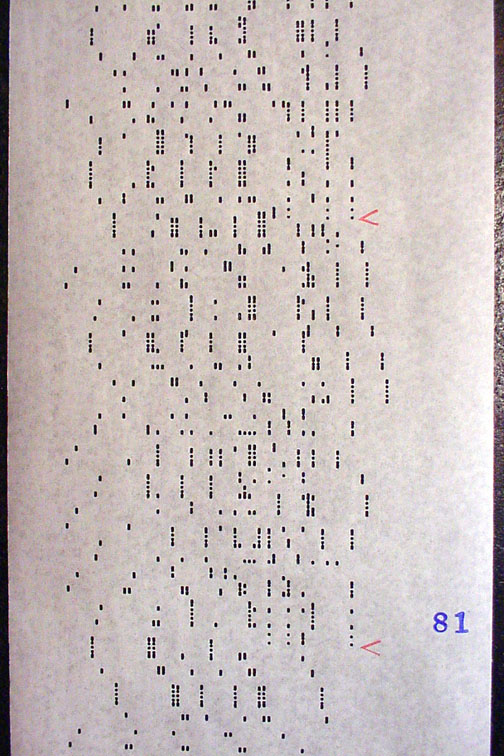
Again, notice how "TIME SPACE" #81 contains elements from the prior photograph of #80 ... but features a lot of superimposed staccato figurations, the first two of which are highlighted by the red accent mark ("<"). Later on we'll show you an example of the original Pleyel music roll arrangement, made from the composer's manuscript, and you'll see that these additional effects are buried in the arrangement, by comparison. What emerges as a sparkling addition to the musical texture on the ARTCRAFT Interpretive Arrangement of today was in 1925 a muddy performance characteristic, in which the extra notes are "lost" in the maze of overlapping notes. Graduated perforations allow the modern arranger to "direct one's attention" to various portions of the piano scale. This means that the added staccato notes, and the themes which follow, truly announce themselves ... as if another instrument (or machine) were contributing to the 'mechanical show'.
(Actually, the earlier, thinner version of this particular "theme" began with "TIME SPACE" #57 ... in the middle of Roll II ... which was supposed to be the start of the second roll for a projected 2-roll Set. Once again, composer Antheil really didn't know much about the rolls' "playing time" along with the requirements of pneumatic valves, wind motor speeds and the other characteristics of the Pianola medium. He evidently thought in sheet music terms and just submitted a score to the Pleyel factory. Antheil's own writings stated that he could compose without the need of a piano, but ... had he devoted the time to learn about the pneumatic player action which operated the instrument, many of these rough edges in the original Set could have been avoided.)

Now ... "fasten your seat belts" for here come a series of short "TIME SPACE" passages --